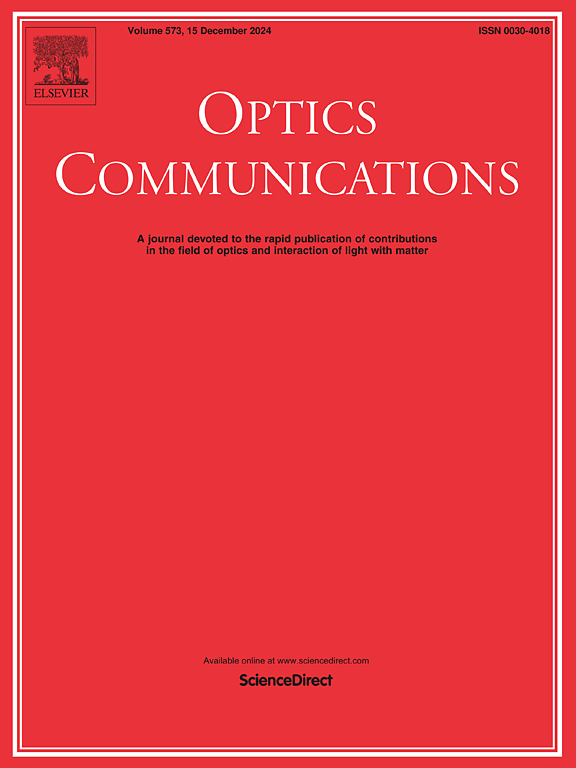基于机器学习的 D 型 PCF SPR 折射率传感器优化设计
IF 2.2
3区 物理与天体物理
Q2 OPTICS
引用次数: 0
摘要
在这项研究中,我们研究了常用的机器学习算法,通过优化性能参数来估计 D 型 PCF SPR 传感器的最高灵敏度。我们比较了极端梯度提升(XGBoost)、随机森林模型和 PyTorch 神经网络机器学习算法,以建立模型并准确预测结果,并通过非优势排序遗传算法(NSGA-II)优化传感器参数。XGBoost 技术表现出了卓越的预测能力,R2 值达到了惊人的 99.64%,并将训练好的模型作为目标函数。标准优化方法的最大灵敏度为 4529.75 nm/RIU,而在 NSGA-II 的指导下,灵敏度增加到 4814.14 nm/RIU,提高了 6.28%。所开发的模型可实现快速、可靠且计算成本低廉的参数预测。此外,它还提供了对输入参数和灵敏度之间错综复杂关系的全面理解,从而在通过应用机器学习算法寻求最佳参数识别方面为现有文献做出了重要贡献。本文章由计算机程序翻译,如有差异,请以英文原文为准。
Machine learning-based optimization for D-shaped PCF SPR refractive index sensor
In this research, we investigated common machine learning algorithms to estimate the highest sensitivity of a D-shaped PCF SPR sensor by optimizing the performance parameters. Extreme gradient boosting (XGBoost), random forest model, and PyTorch neural network machine learning algorithms were compared to build a model and accurately predict the results, and sensor parameters were optimized through Non-dominated Sorting Genetic Algorithm (NSGA-II). The XGBoost technique demonstrated exceptional prediction capability, achieving an impressive R2 value of 99.64% and the trained model served as the objective function. The maximum sensitivity of 4529.75 nm/RIU was achieved in the standard optimization approach, However, with the guidance of NSGA-II, this sensitivity increased to 4814.14 nm/RIU, representing an improvement of 6.28%. The developed model enables rapid, reliable, and computationally cost-effective parameter predictions. Additionally, it provides a comprehensive understanding of the intricate relationships between input parameters and sensitivity, thus contributing significantly to the existing literature in the quest for optimal parameter identification through the application of machine learning algorithms.
求助全文
通过发布文献求助,成功后即可免费获取论文全文。
去求助
来源期刊

Optics Communications
物理-光学
CiteScore
5.10
自引率
8.30%
发文量
681
审稿时长
38 days
期刊介绍:
Optics Communications invites original and timely contributions containing new results in various fields of optics and photonics. The journal considers theoretical and experimental research in areas ranging from the fundamental properties of light to technological applications. Topics covered include classical and quantum optics, optical physics and light-matter interactions, lasers, imaging, guided-wave optics and optical information processing. Manuscripts should offer clear evidence of novelty and significance. Papers concentrating on mathematical and computational issues, with limited connection to optics, are not suitable for publication in the Journal. Similarly, small technical advances, or papers concerned only with engineering applications or issues of materials science fall outside the journal scope.
 求助内容:
求助内容: 应助结果提醒方式:
应助结果提醒方式:


